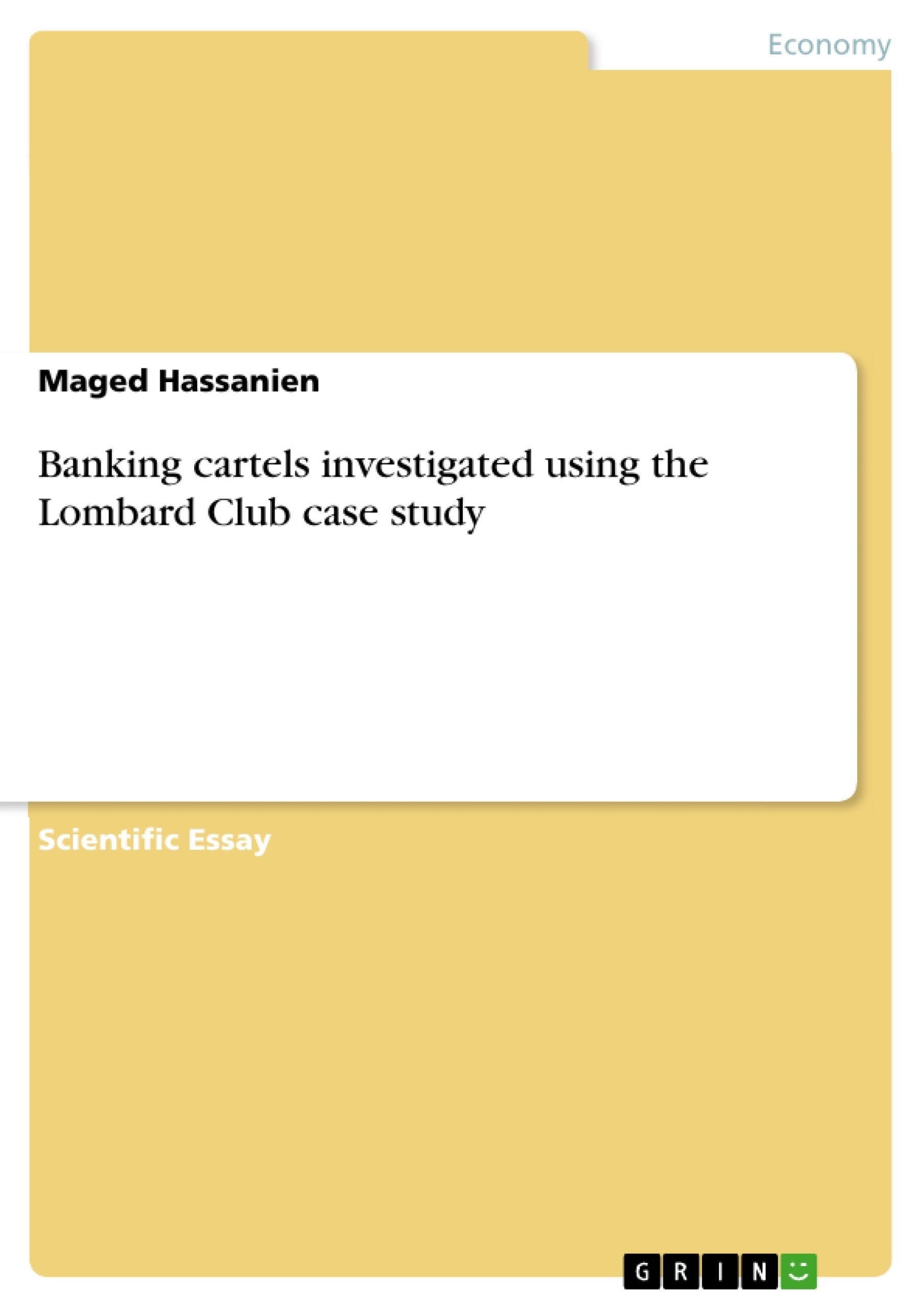This paper deals with cartels with a focus on the banking sector. This will be explained or examined using the case study of the Lombard Club (banking cartel in Austria around 1995).
The second chapter uses industrial economics to provide the basis for understanding restric-tions of competition, as well as cartels, supplier concentration, barriers to entry and their effects on the market.
In the third chapter, this market, which is imperfect because of betting restrictions, is exa-mined and analysed more specifically for the banking sector. Here the restrictive cooperation between banks and its effects on the market are described.
The fourth chapter examines the Austrian situation in the 1990s (beginning of cartel forma-tions and cartel agreements (including the formation of the Lombard Club). Here the situation on the financial market in 1990 is analysed. Furthermore, statements are made on competition and market concentration. The theories developed previously are used as a basis for this.
The fifth chapter focuses on the Lombard Club and its structures and facts about the cartel. It analyses the distortive measures of the so-called Club of Bankers in Austria in order to show how the measures have affected the Austrian banking market. The theoretical foundations previously elaborated will also serve as a basic understanding in this context.
The sixth chapter provides a summary of this topic and a conclusion with an outlook on the cartel situation in Austria and the EU.
Inhaltsverzeichnis (Table of Contents)
- Introduction
- Theoretical foundations of competition economics
- Focus on industrial and competitive economics.
- Main features of competition law
- Restrictions of competition through agreements, decisions and concerted practices of undertakings
- Cartel by agreement between companies
- Cartel by corporate decision...
- Cartel through concerted behaviour by companies
- Cartels through horizontal restrictions of competition
- Cartel formation through vertical restraints of competition
- Restrictions of competition through supplier concentration, merger, entry barriers.
- Prohibition of abuse......
- Market definition ........
- Dominant position
- Offences of abuse
- Prohibition of abuse by companies with a superior market power/hegemony...
- Prohibition of restrictive practices, in particular boycotts
- Competition between banks
- Development in the EU………………………….
- Barriers to market entry - Competition (restrictions) - Reasons for bank cooperations
- Economies of scale.
- Capital requirements....
- Product diversification and conversion costs....
- Negotiating power of customers/banks and substitute products
- Rivalry between banks ..
- Market structure.
- Industry growth.....
- Overcapacity..
- Conclusion of the chapter..
- Situation of banking competition in Austria in the 1990s
- The Lombard Club vs. competition economics.
- Conclusion and outlook
Zielsetzung und Themenschwerpunkte (Objectives and Key Themes)
This work aims to analyze the competitive landscape of the banking sector, specifically focusing on the case study of the Lombard Club in Austria. The analysis will explore the theoretical foundations of competition economics, including the legal frameworks governing competition and the various forms of restrictions that can arise. The study also examines the specific challenges and dynamics of competition within the banking industry, including the factors influencing market entry, the presence of barriers, and the reasons for cooperation between banks.
- Competition economics and its application to the banking sector
- Restrictions of competition through cartels and other practices
- Market structure and dynamics of competition in the banking industry
- The impact of the Lombard Club case on the understanding of competition economics
- The role of legal frameworks and regulations in shaping competition
Zusammenfassung der Kapitel (Chapter Summaries)
- Introduction: This chapter provides a brief overview of the topic and sets the stage for the subsequent analysis. It introduces the concept of banking cartels and the importance of examining competition in the banking sector.
- Theoretical foundations of competition economics: This chapter delves into the core principles of competition economics, outlining the main features of competition law and the various forms of restrictions that can impede competition. It discusses cartels and other restrictive practices, including horizontal and vertical restraints, as well as the role of merger and acquisition activities in shaping competition.
- Competition between banks: This chapter examines the specific characteristics of the banking sector and the factors that influence competition among banks. It discusses barriers to market entry, the reasons for bank cooperation, and the dynamics of rivalry within the banking industry.
- Situation of banking competition in Austria in the 1990s: This chapter analyzes the specific situation of banking competition in Austria during the 1990s. It provides insights into the prevailing competitive landscape and the factors that shaped it.
- The Lombard Club vs. competition economics: This chapter delves into the case study of the Lombard Club, analyzing the situation from the perspective of competition economics. It examines how the club's actions affected competition in the banking sector and explores the implications for understanding the legal and economic frameworks that govern competition.
Schlüsselwörter (Keywords)
The core keywords and focus topics of this work include banking cartels, competition economics, market structure, barriers to entry, restrictive practices, the Lombard Club case study, Austrian banking sector, and legal frameworks governing competition. The analysis explores both theoretical concepts and practical applications, seeking to shed light on the complexities of competition within the banking industry.
- Arbeit zitieren
- Dipl.-Betriebs- und Verwaltungswirt und PhD Maged Hassanien (Autor:in), 2018, Banking cartels investigated using the Lombard Club case study, München, GRIN Verlag, https://www.hausarbeiten.de/document/974157


